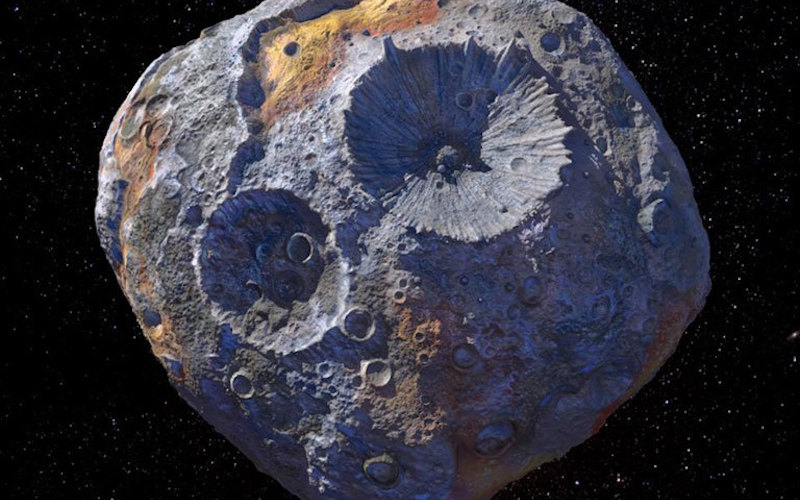One of the biggest objects in the asteroid belt (orbiting the sun between Jupiter and Mars) is 16 Psyche. Found in the night sky by Annibale de Gasparis in 1853 and being the sixteenth minor planet discovered, it was named for the Greek personification of the soul. Psyche was born a mortal, so beautiful however, that she was worshipped thus attracting the ire of Venus. Cupid was dispatched in order to cause mischief but instead, scratched by his own arrow, fell deeply in love with Psyche himself. As the complicated dramatic allegory ensues Psyche is also pricked by the arrow. After nightly trysts and many tribulations they are ultimately married, 'soul' with 'love', their offspring a daughter named 'pleasure' (Voluptus).
Unlike the ancient Greek conception of the soul - the breath of life - 16 Psyche is incredibly dense. This massive metallic lump has such a powerful gravitational pull it regularly disrupts the trajectory of passing asteroids. It is by analyzing the perturbations of passing objects that astronomers have calculated it's density and likely composition. Light curve analysis shows it is pretty irregular in shape. There is a big dent near the equator and two smaller depressions near the south pole. Radar observations show the surface to be 90% metallic and 10% silicate rock. It is most likely composed of nickel and iron which is exactly what earth's core is believed to be.
Asteroids are classed according to analysis of color, solar reflection and emissions spectrum. 16 Psyche is considered an m-class asteroid many of which are the remaining metal core of asteroids or protoplanets after the mantle has been stripped away. The case of 16 Psyche however, is that it is not the part of any identified asteroid family. There is a possibility that it was formed so early that asteroids created from it's mantle have already been ground into tiny bits and scattered throughout space or that it is the parent body a whole class of rare stony iron meteorites. A third possibility is that, during early planet formation, the mantle may have been stripped away by numerous sideswipe collisions.
Observations by the NASA Infrared Telescope reveal the presence of hydroxyl ions suggesting water ice. As 16 Psyche likely formed in dry conditions the ice is thought to have been deposited by impacts of smaller carbonaceous asteroids. No spacecraft has thus far visited 16 Psyche. A mission, approved by NASA in 2017, is due to launch in 2022, arriving at the asteroid four years later. It will orbit the asteroid for 20 months using equipment based on existing technology to take measurements, photos and video.

Picture: Artist's concept by P. Rubin
Congratulations @edelweird! You have completed the following achievement on the Hive blockchain and have been rewarded with new badge(s) :
You can view your badges on your board and compare yourself to others in the Ranking
If you no longer want to receive notifications, reply to this comment with the word
STOPDo not miss the last post from @hivebuzz: